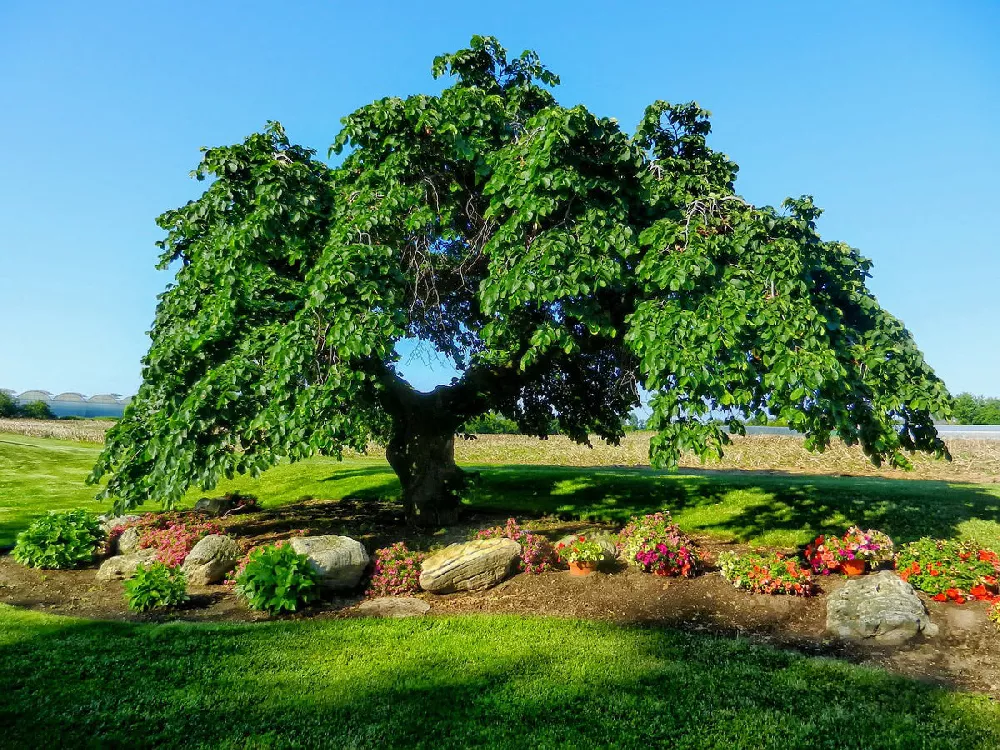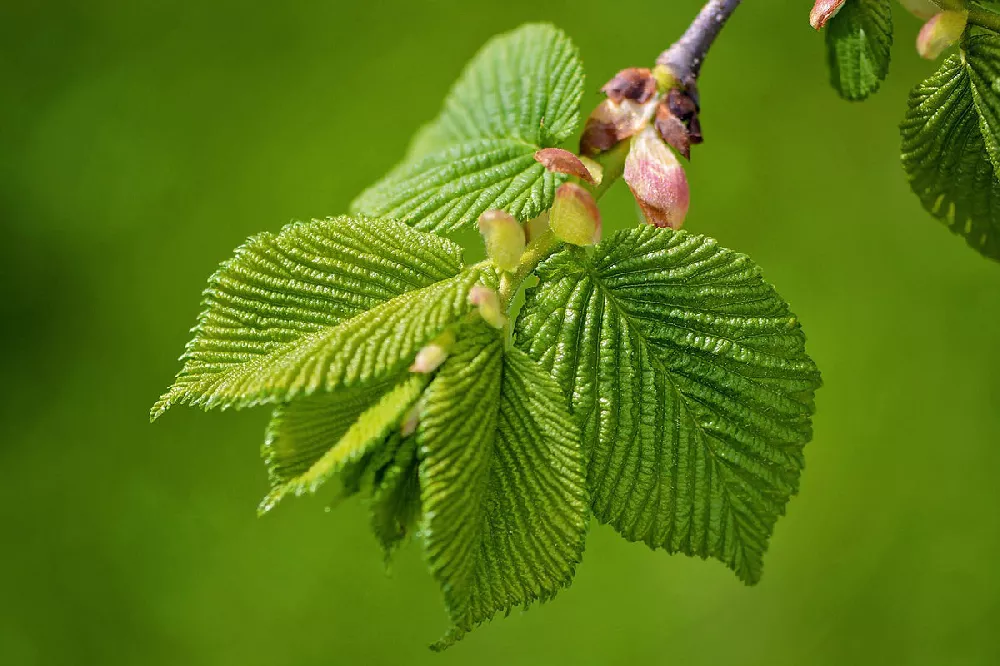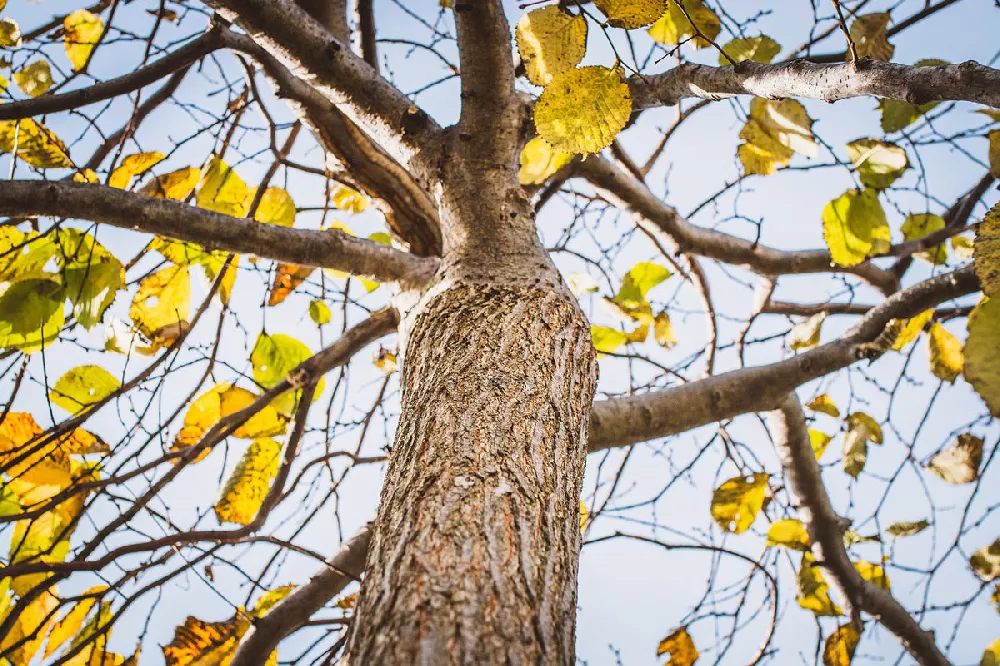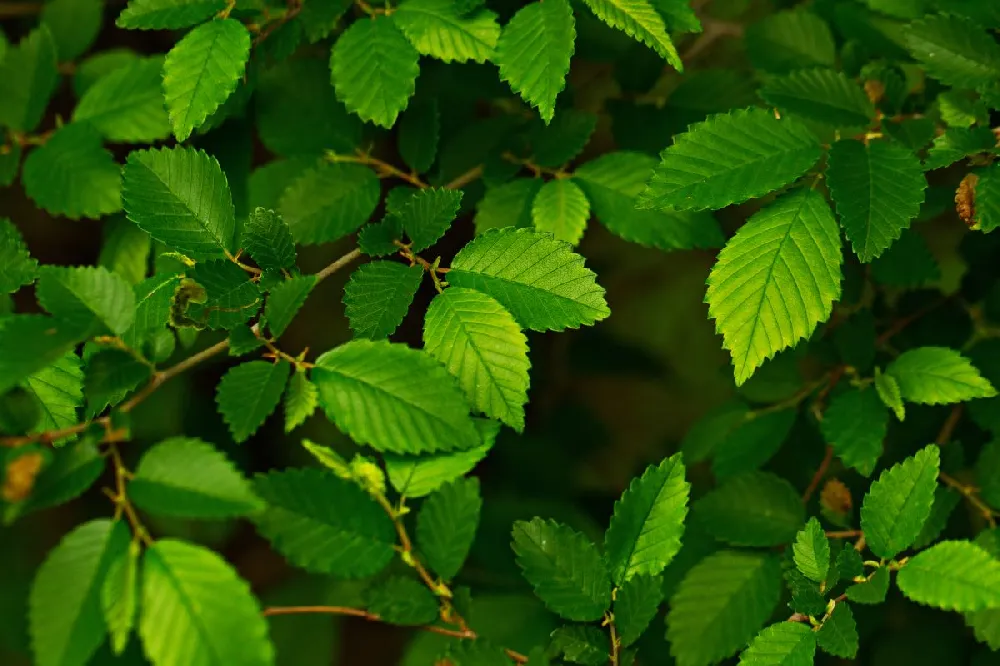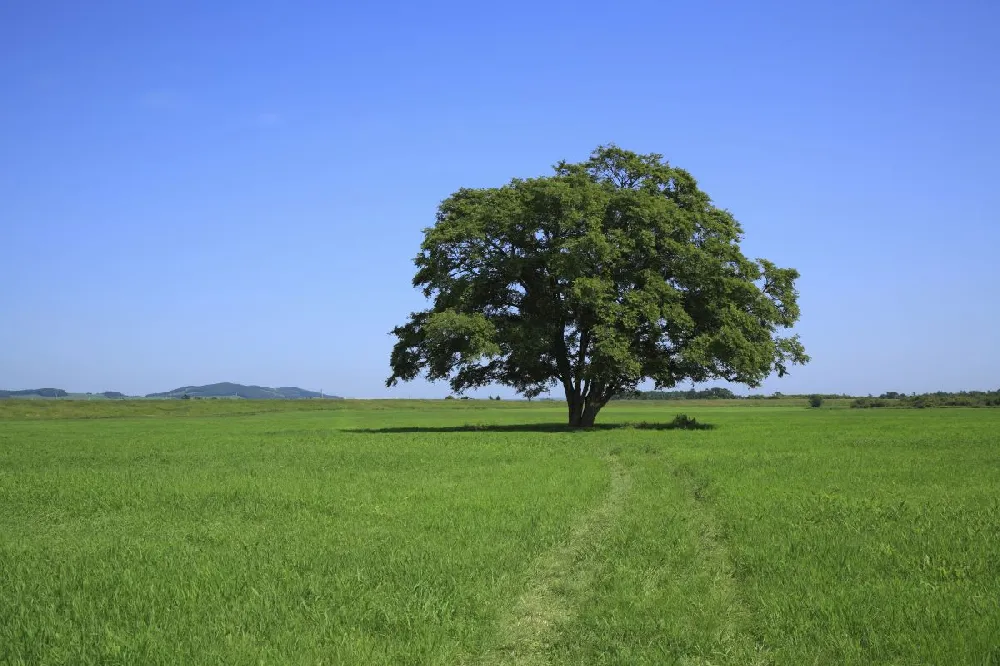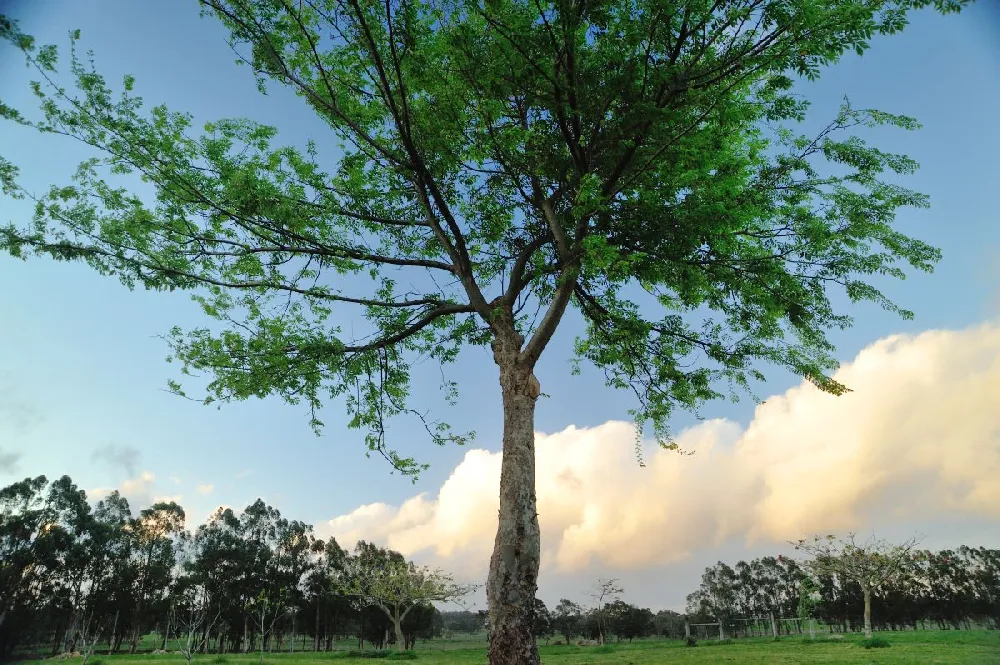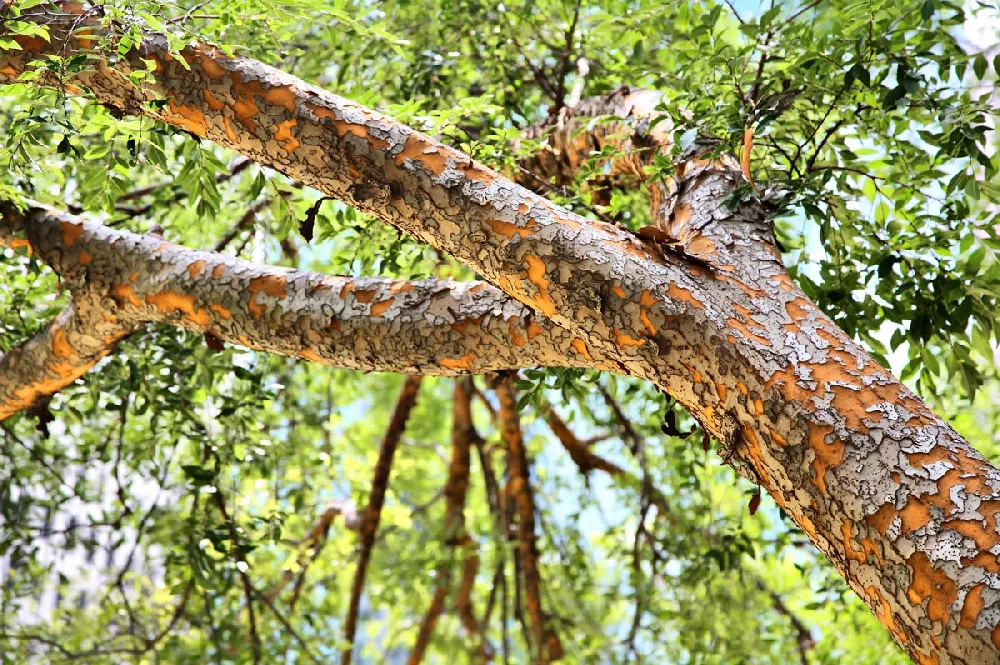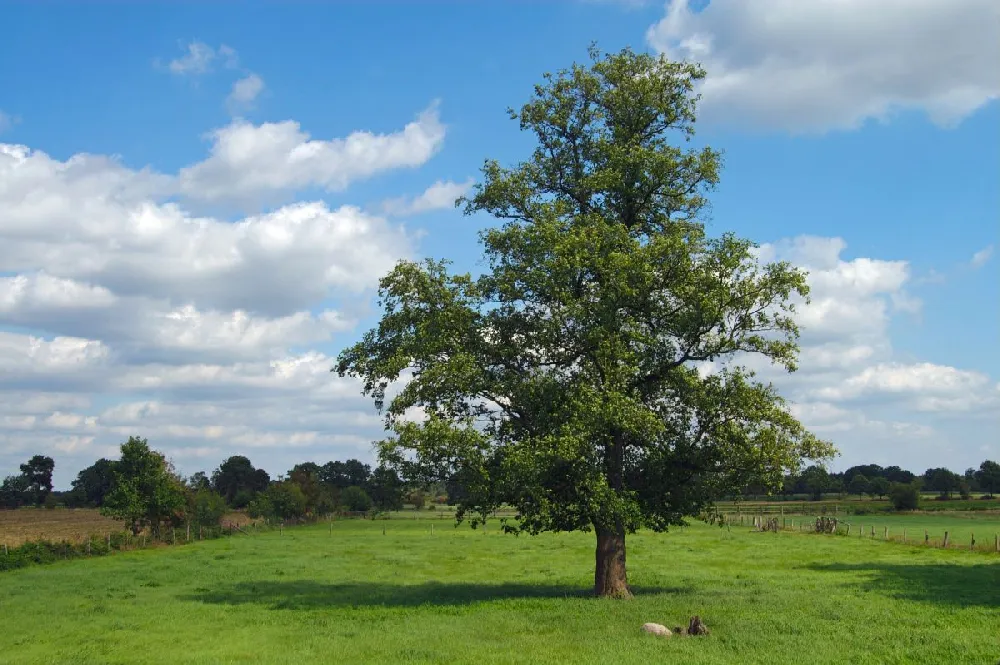- Home >
- Ornamental Trees >
- American Elm Trees
American Elm Trees for Sale - Buying & Growing Guide
As American as apple pie and baseball, the American elm, Ulmus americana, was the tree of choice throughout the 19th century, lining roadways and providing a gracious presence in parks and back yards. Dutch elm disease (DED) nearly destroyed the species, but now resistant varieties are bringing the American elm back to its rightful place as one of America's great trees. In addition to their graceful shape and elegant silhouette, there are other reasons to love the American elm:
- These sturdy trees can live for up to 300 years.
- Large, shiny leaves turn an attractive yellow-green in fall.
- Trees can grow up to 6 feet in a year, in just about any type of soil.
Enter your zip code to find nearby stores that may carry this plant.
Plant Care
Sunlight

An American elm should be planted where it will get six or more hours of direct sunlight a day.
Watering
American elms are thirsty when they are young and need regular watering until well-established.
Fertilizing

If planted in fertile soil, established elms don't need any fertilizer once they have matured.
Planting and Care
Planting instructions
American elms are large trees with extensive root systems and branch spread, so site your tree well away from structures, sidewalks, and roadways. A mature elm can have a canopy that is 70 feet wide, so give your sapling some space to grow. They are tolerant of a range of soil types, but plant them where they will be able to drain well.
Dig a hole that’s a little deeper than the root ball and twice as wide. Unpot the sapling, and tease out any roots that are encircling the root ball. Throw a shovel-full of well-rotted manure or compost in the hole and place the tree there. Fill in around it with topsoil that’s been mixed with manure or compost, and tamp down as you fill to eliminate air pockets.
Once planted, water thoroughly until water starts to pool around the root zone. Add an organic mulch, such as bark chips, to conserve moisture. Water every few days until the sapling is well-established.
Watering and nutrients
Young American elms should receive about an inch of water a week, either from rain or supplemental watering. You want the soil to be moist but not soggy. Once the elm is established and growing well, you can taper back on supplemental watering until you are just watering it during very dry, drought-like conditions.
In the spring after your tree’s first year, fertilize with a balanced product intended for use by landscape plants. You can also add a layer of compost around the root zone to give added nutrients to your tree. When fully grown, the tree doesn’t need supplemental fertilizer, although a light application in spring won’t hurt it.
Pruning
Check your growing American elm regularly for dead, broken, or diseased branches, and remove them when you see them. Other than that, the tree will naturally grow to a pleasing shape and needs no supplemental pruning.
Pests, diseases, and animals
DED hasn’t been eradicated, although newer varieties of American elm are resistant. But it pays to monitor your tree carefully. DED can be pruned out if caught early enough. It’s caused by a fungal pathogen and spread by elm bark beetles. Look for leaves that have turned yellow out of season or that are wilted and brown. If you peel the bark off an infected branch, you will see brown streaking on the wood. Symptoms often appear in spring or early summer. If you notice them, contact an arborist immediately, as they can recommend mitigation tactics to save your tree.
Other pests include elm leaf beetle, elm leaf miner, and several caterpillars, but generally a healthy tree can withstand some insect pressure. Young trees may also be susceptible to browsing by deer and, in the north, moose. If these ungulates are a problem in your region, you may want to fence in your American elm while it is young.
Achieving maximum results
Although monitoring your tree for DED is an element that adds to the care of the American elm, in general, they are easy keepers and not particular about where or how they’re grown. The key with an American elm is to get it started properly, giving it an optimal, open location and providing adequate water and food during the first few years of its life. DED shouldn’t scare you off. At one time, yes, it was a terminal diagnosis for the American elm. But the tree of today has been bred to fight back against this disease, and if you keep an eye on your elm during its formative years, you should be able to avoid DED entirely. If you do that, your American elm will reward you with beauty and shade for the rest of your life.
FAQs
Are American elms endangered?
From about 1930 to 1980, American elms were endangered, with millions dying from DED. But American elms are also an American success story, with scientists searching for and reproducing DED-resistant trees to create the varieties that are now increasingly being grown and populating countrysides and urban areas.
Is there a way to protect my American elm from DED?
Being vigilant about observing your American elm is your first defense. Watch for signs of browning leaves, and prune out any as soon as you see them, disposing of infected branches carefully. A professional arborist can apply insecticides to kill elm bark beetles, but this is not something that you should try to do on your own. Fungicides can also be used, but again, these should be applied by a professional when needed.
Are American elms easy to grow?
Yes! These hardy trees can be grown in most soils, tolerate some shade, and grow fairly quickly, rewarding the gardener with a shaded canopy and attractive silhouette within a few years. Since they need little pruning and no out-of-the-ordinary care, they can be planted and grown by even beginning gardeners.
Compare Similar Products
You can't add more Product Name - Product size to the cart.
OK